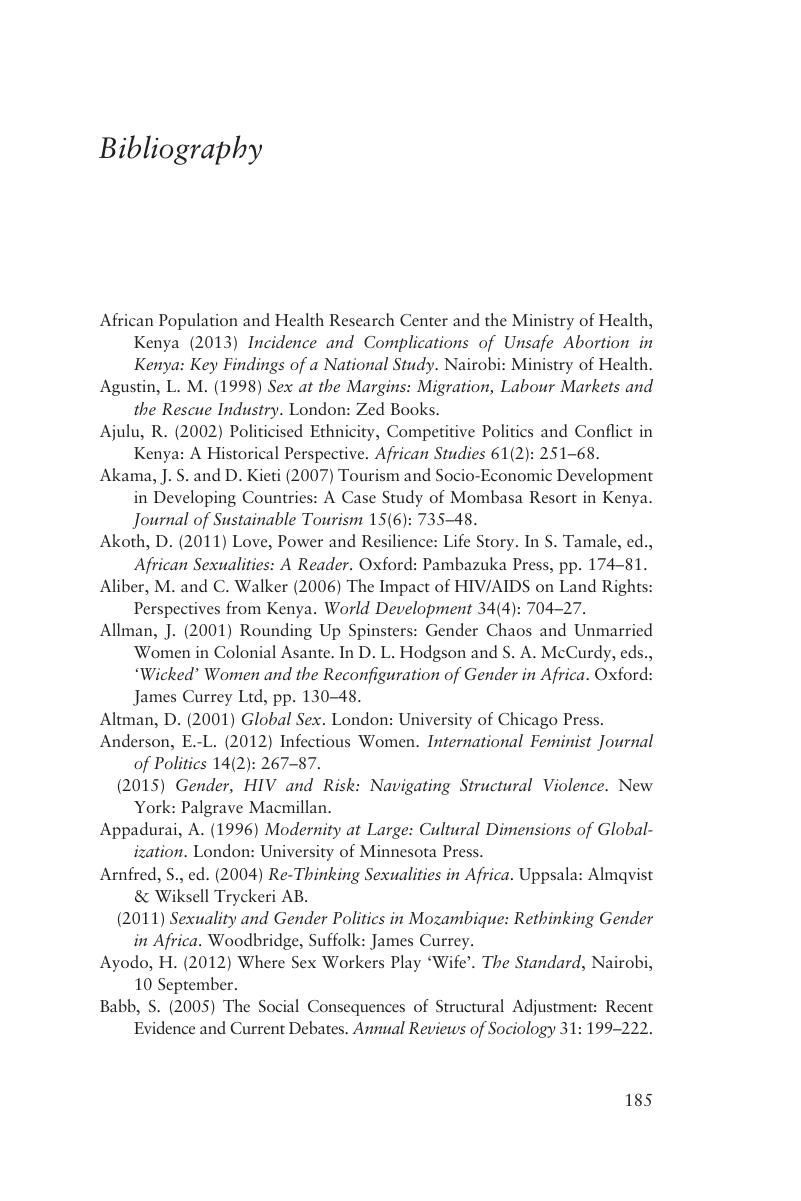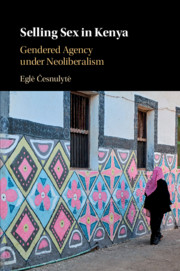Book contents
- Selling Sex in Kenya
- Selling Sex in Kenya
- Copyright page
- Contents
- Acknowledgements
- Abbreviations
- 1 Introduction
- 2 Neoliberal Transformations and Gender in Kenya
- 3 Gendered Livelihoods and ‘Bargaining with Patriarchy’
- 4 Selling Sex in Mombasa
- 5 Dreams and Strategies of Women Selling Sex
- 6 A Vicious Circle
- 7 Connecting Global and Local
- 8 Conclusions
- Bibliography
- Index
- References
Bibliography
Published online by Cambridge University Press: 18 November 2019
- Selling Sex in Kenya
- Selling Sex in Kenya
- Copyright page
- Contents
- Acknowledgements
- Abbreviations
- 1 Introduction
- 2 Neoliberal Transformations and Gender in Kenya
- 3 Gendered Livelihoods and ‘Bargaining with Patriarchy’
- 4 Selling Sex in Mombasa
- 5 Dreams and Strategies of Women Selling Sex
- 6 A Vicious Circle
- 7 Connecting Global and Local
- 8 Conclusions
- Bibliography
- Index
- References
Summary

- Type
- Chapter
- Information
- Selling Sex in KenyaGendered Agency under Neoliberalism, pp. 185 - 200Publisher: Cambridge University PressPrint publication year: 2019

